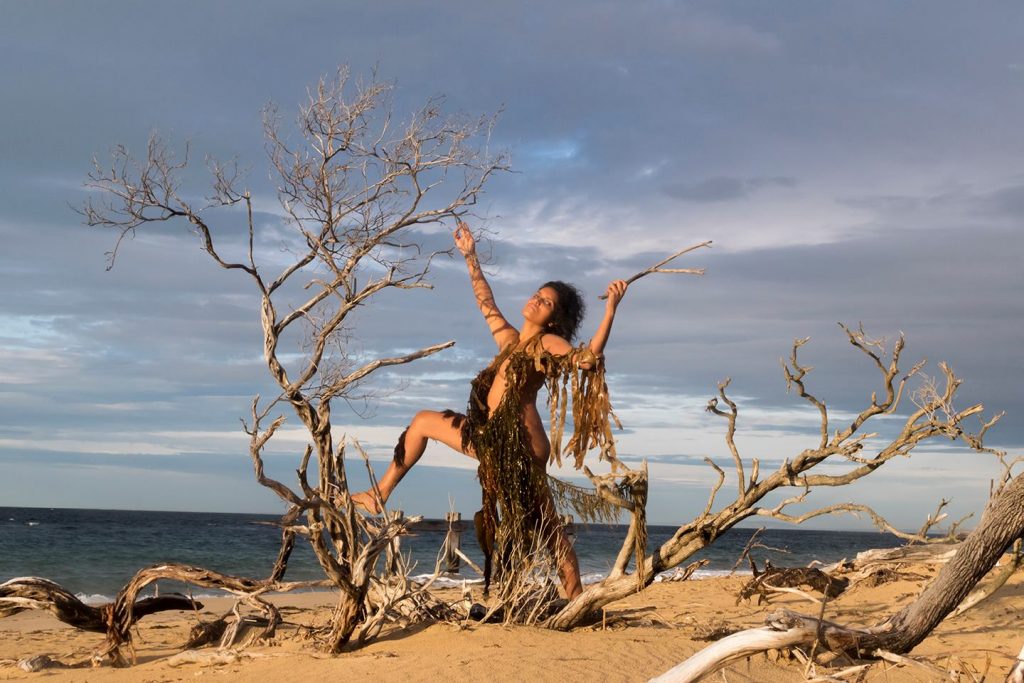As the name implies, TextaQueen is a “texta” or felt tip virtuoso. Through this simple medium she explores complex issues around race, gender and cultural identity.
Having been brought up in Perth by Goan Indian parents, she is drawn to the subjects of racism, the influences of pop culture and neo-colonial legacies.
TextaQueen has exhibited widely across Australia and the US and also hosts drawing workshops for all ages. We pulled up a chair for the would-be super-heroine, eager to find out what she’s all about.

Through the unassuming and nostalgic felt tip marker, TextaQueen dedicates herself to navigating the contentious themes of race, gender, empowerment and colonialism.
HAPPY: How did you come to choose the humble felt tip as your medium of choice?
TQ: I chose markers for their portability and ever readiness, as I was drawing everywhere I went and I first started my career. I had been studying mostly photography and video at art school but the accessibility of markers was really appealing without the facilities of university. I like the association with childhood that they have, using it to subversively convey complex political ideas.

HAPPY: How does your own sense of cultural identity influence your work?
TQ: My work is about projections of cultural identity onto me rather than a stagnant sense of cultural identity. Expectations of cultural authenticity are something I try to examine as I process how collective ideas related to cultural identity manifest themselves personally.
HAPPY: What does feminism mean to you?
TQ: A lot of feminism that I see in the world doesn’t feel inter-sectional. It also doesn’t take into account things beyond gender experience such as race, ability and class. I don’t see myself reflected in it and I don’t see the experiences of other people who are very marginalised by patriarchy such as trans women being acknowledged either. Obviously my work is about empowerment in my gendered experience (as well as other experiences) but I resist having it framed within a white feminist context.

HAPPY: What is the inspiration behind your photographic exhibition Eve of Incarnation?
TQ: In my photographic show I’m trying to re-frame the idea of the ‘nature nude’ and how it often depicts white feminine fragility in a landscape without acknowledging that this presence is there via the violence of colonial histories. I was trying to contemplate connecting to a landscape as someone whose ancestry belongs elsewhere, someone who is also an alien/settler presence in that landscape. Draping myself in the fabric of the landscape, the seaweed and the plants, in reference to high-fashion, is a way of resisting the ethnographic projections onto my brown body. The images have an element of science fiction, as it is science fiction that I exist on that land but I’m ancestrally from a place so far away.

HAPPY: Have you always been interested in nudes as a subject?
TQ: I started drawing nudes in a proposed employment context that didn’t follow through, but then I felt the value in what I was doing and continued. My work is about a dynamic between vulnerability and empowerment and nudity is also an allegory for that.

HAPPY: Do you think the themes of sexuality and gender need more exposure in the art world?
TQ: It depends how and who is depicting those themes. There is a long history of artists making work about those themes that I don’t find empowering. I’d like to witness more work that was about sexuality and gender. Work that is about empowerment, created by people making work about their own experience whose sexuality and gender is not usually centred in the art world or elsewhere.

HAPPY: Are there any artists you admire or take inspiration from?
TQ: I am more inspired by creative people that I know in real life, their work, our conversations and shared energy, than artists that I don’t know personally. Many of those people aren’t visual artists or don’t have careers in the commercial art world. I am excited about the work that the women of colour art group, Black Salt Collective based in Oakland and LA are doing. Closer to home, I love Vernon Ah Kee’s work, much of the work that comes out of proppaNOW, and Yhonnie Scarce’s work. I was lucky to spend some time with Emory Douglas in Oakland. Of course popular visual culture has influenced me and still does.

HAPPY: What do you hope to achieve through your workshops?
TQ: I really love facilitating workshops when I connect with people. I hope that I can aid people who don’t often see themselves represented to represent themselves.



